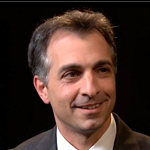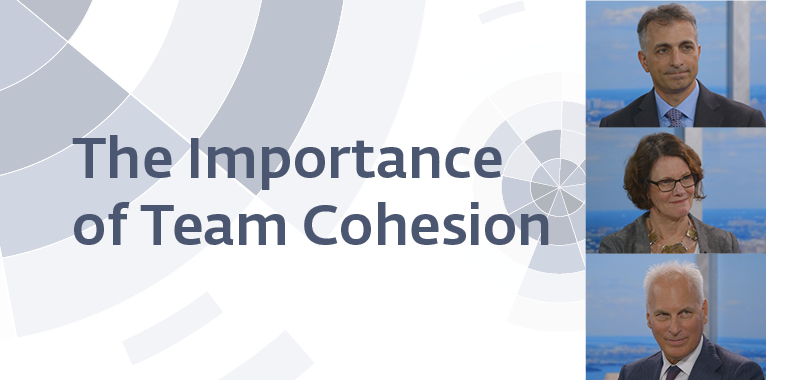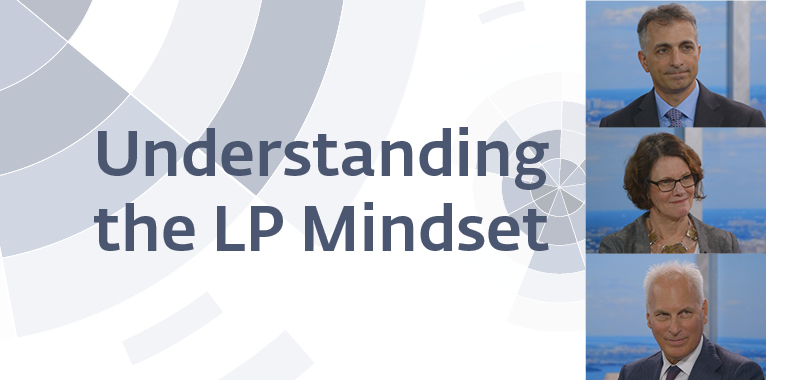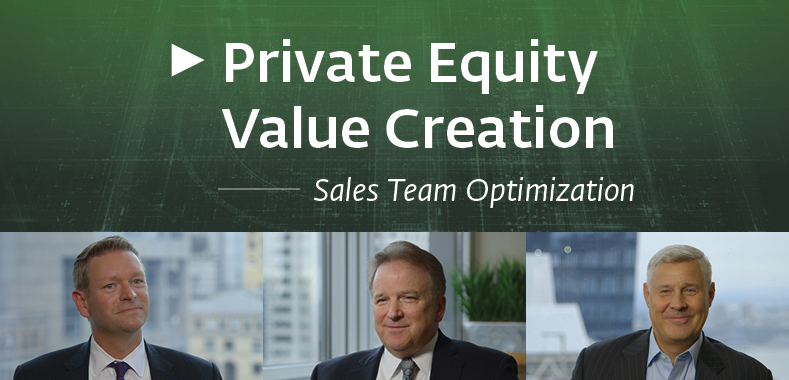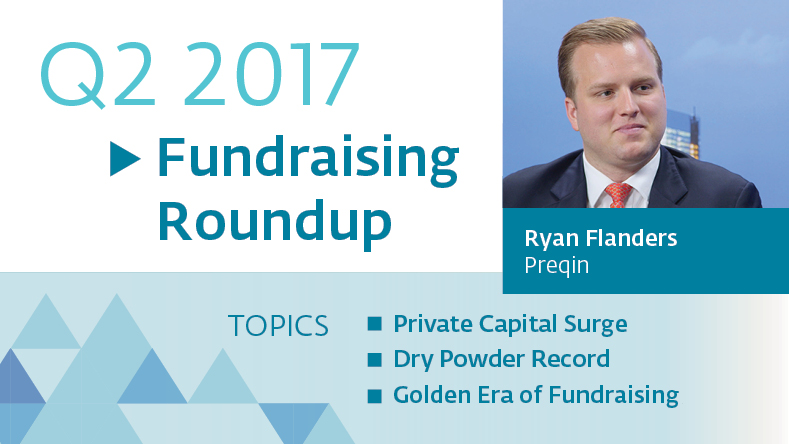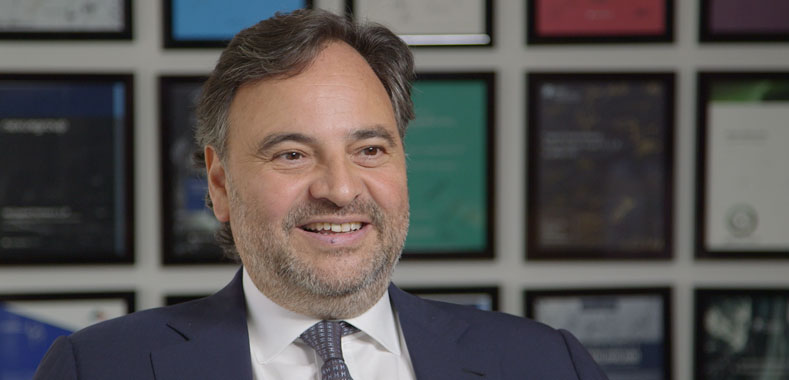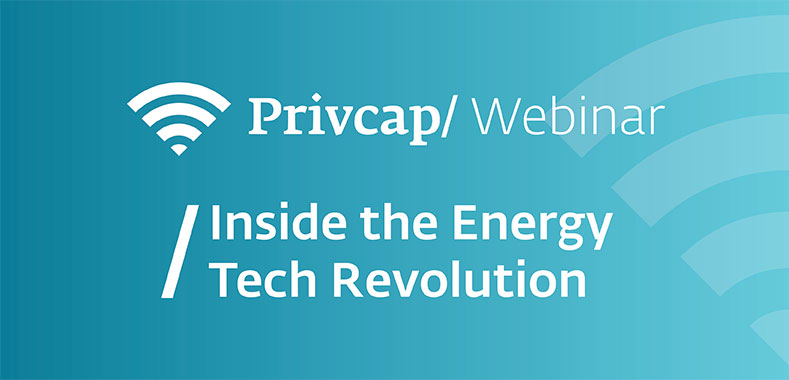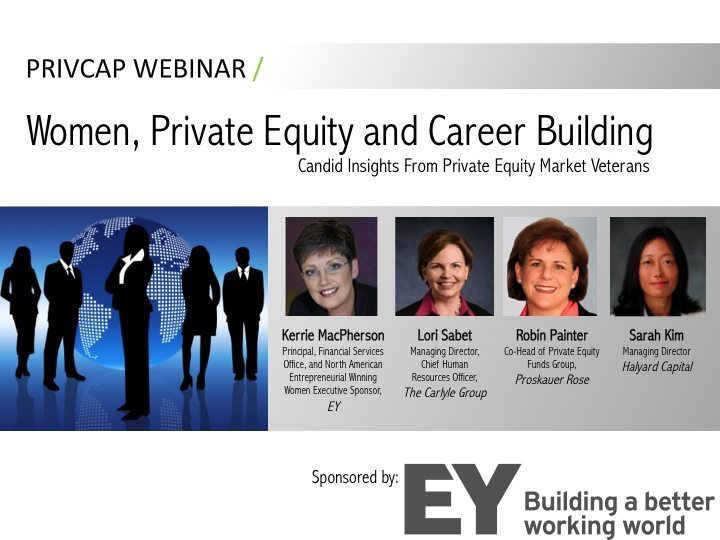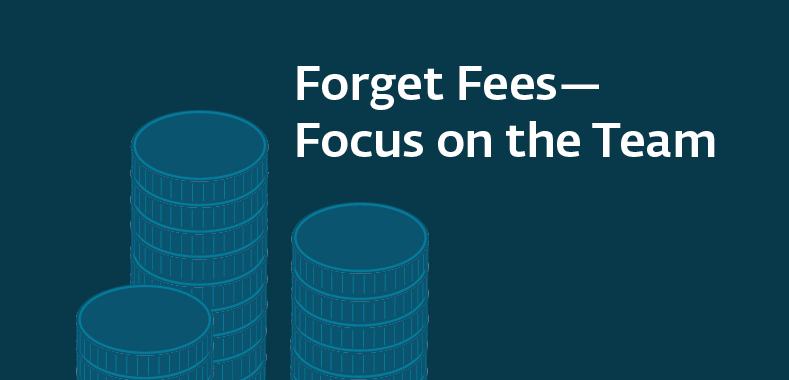On-Demand Webinar: Forget Fees – Focus on the Team
Transcript Download Transcript
Privcap Webinar: Forget Fees – Focus on the Team
Matt Malone, Privcap:
Good morning, everyone. This is Matt Malone from Privcap. Thanks very much for joining us for our webinar today.
We’re going to be talking about a very important topic to all of us in the private capital industry, which is due diligence on the investment team. We’re very lucky to have a great panel of guests to share their insights today. We’ve got Graeme Faulds from eVestment, Mike Elio from StepStone Group, and Greg Stento from HarbourVest. Welcome, gentlemen.
Greg Stento, HarbourVest:
Thanks, Matt.
Malone: We are going to run through a number of topics today. I’m going to start by letting our participants give a brief introduction, and then get into the questions. Also, throughout the webinar, you can submit questions. We’ll be doing a Q&A at the end, so please ask questions early and often. We’ll get to as many as we can in the Q&A session, but we certainly encourage you to take advantage of all the assembled expertise we have on the line and ask away.
Without further ado, Greg Stento from HarbourVest, if you wouldn’t mind saying hello and giving a brief background.
Stento: Thanks, Matt. It’s Greg Stento from HarbourVest. I’m a managing director. I’m starting my 29th year investing in the private markets industry. I chair our Global Investment Committee. HarbourVest is a global private markets provider of solutions that help address the private market investment needs of investors. We do this from nine offices around the globe, so we’re local in the markets in which we invest, and we’re active in all parts of the private markets—primary, secondary, and direct across buyouts small, medium, large, microcap growth equity, venture capital, private debt, real assets and diversity. Thanks.
Malone: Thank you, Greg. Now, Mike Elio from StepStone.
Mike Elio, StepStone:
Thanks, Matt. I am Mike Elio. I’m a partner at StepStone Group based out of the New York office. We are a global private market solutions provider, both on the advisory side as well as the separately managed account and asset management side. We are also a global firm, with 14 offices around the globe, with about $110 billion in assets under advisory, and $32 billion under management. I am actually on the research team, co-head of the mid-market U.S. team as well as the secondary’s funds team.
Prior to StepStone, I was at ILPA, where I had fingerprints on everything from Principals 2.0 to best practices and reporting as well as the DDQ and the ILPA benchmark.
Malone: Thank you, Mike. Now, Graeme Faulds from eVestment.
Graeme Faulds, eVestment:
Thanks, Matt. My name is Graeme Faulds. I’m a Director of Private Market Solutions at eVestment, a global company that works with over 2,000 clients across traditional, hedge fund, and private markets. Our private market solutions are used by both investors and fund managers who in aggregate are managing close to $1 trillion of private market assets. Prior to working in software, I was a founding partner of SL Capital Partners, and spent 15 years as an investor in both funds and co-investments throughout Europe and North America.
Malone: Thank you, Graeme. We’re actually going to start off our discussion with Graeme: eVestment did a survey recently of LP sentiment and had some interesting findings that I think would be good to set the stage for our discussion about the importance of the team. So, I’m going to let Graeme kick it off and give us a brief overview of some of those findings as they relate to LPs and what they look for in due diligence. Graeme?
Faulds: Thanks, Matt. Yes, this is an annual survey that we conduct at eVestment, focusing on investors who invest in the private market space. The bulk of respondents were LPs. There are also quite a number of fund-to–funds and, for the first time this year, we also included consultants. I think one of the headline results from the survey was that, when asked to rank and rate the important factors in the due-diligence process, the one that came out top was the team by quite a significant amount.
As we dig deeper into that, we also saw that managers—although the team was number one, fees, although important, actually scored quite far down the scoring system. When we got into the detail of the track record analysis that investors are performing, the number-one factor was actually the net-to–LP performance, suggesting that fees in and of themselves are not a critical part of the due-diligence process. But the impact of those fees on performance is quite important.
We also saw that investors tend to trust the numbers that they’re getting from the fund managers in most cases. But interestingly, on the next slide, we see 76 percent of investors said they will recalculate the performance they’re receiving and do the slicing and dicing of the quantitative analysis more often than not. We also asked investors what were the key concerns for the year ahead and looking out in the horizon? Again, what we saw here was that fees at 5 percent was actually a relatively low theme within this aspect of the survey. They were more focused on items such as valuations, dry powder, and future performance.
Malone: Thank you, Graeme. I think that’s a good set–up for some. Mike, let’s start with you about the importance of understanding the team that’s reflected obviously in these numbers. To your mind, why is it such an important part of the due–diligence process?
Elio: Sure. Obviously, the team is who you’re giving your money to, right? So, when it comes to being an LP and assessing general partner, you’re not doing what a general partner does. A general partner can look at a company, look at the balance sheet, the numbers, all the metrics, and say, “Okay, this is the company I can support.” When you’re an LP, instead, you are effectively writing a blank check to a team, and that team—that cohesion, that dynamic, and their skill set—is the most important aspect of what you’re investing in. So, understanding that team is incredibly important.
There are a number of ways to assess the team, and I’m sure we’ll get into that in a minute, but again, it’s that qualitative aspect of the team that really needs to be focused on.
Malone: Greg, what are your thoughts?
Stento: I would echo what Mike says. This is a people business. No question about it. When we invest in new funds, we’re investing typically in a blind pool. All you really have is the people and the limited partnership agreement. So, you’re putting all of your confidence and trust and conviction in that team, in their ability to execute their strategy and to deliver the results that are compelling you to make the investment.
It’s said that private equity is value-added investing, so we’re relying on those general partners to add that value to the investments that they make and to drive superior returns. So, this is very much a people business.
Malone: Great. Thanks, Greg. I’ll ask this for you to start, Greg, as well. One of the things that is clear that, call it over the last decade and even in recent years, the amount of data that is available to LPs in terms of diligence has increased dramatically as it has in all parts of our lives. I’m wondering if you could talk a bit about how you use that data to perhaps do better diligence on the team, which is obviously a more qualitative assessment, but are there ways you are using data or things that you find particularly useful that help you in ultimately assessing a team?
Stento: Sure. Data is important. But it’s really the integration of that data, the integration of your quantitative assessments and diligence, along with your qualitative work that gets you to hopefully the desired end conclusion. We think a little bit of investing in private equity partnerships is a mosaic. You’ve got lots of little tiles, lots of little pieces, that you’re trying to assemble together to get an overall picture of what the investment opportunity looks like, and that data helps you to assemble a lot of those little pieces to the puzzle. So, the data can help you to quantify aspects of the investment to create measurable and comparable points that you can utilize in thinking about an opportunity relative to other opportunities. But it can also obviously help you very specifically with regards to the opportunity that you’re looking at.
We want to make sure that, through the data, we understand what a manager is good at and what a manager is not so good at, and we want to make sure that the manager understands that as well. A lot of times, we’ll have someone come in and make certain assertions about the way they invest and create money and, when we start to run data around that, we realize that sometimes it’s not quite aligned with what the manager says. So, we want to make sure we’re using that data to verify what we’re picking up during the due-diligence process.
The data is also helpful to the thinking about risk and quantifying risk in certain aspects. So, we do a lot of computations that help us to try to understand the risk associated with each investment. And obviously that’s historical—you’re looking back, but you’re trying to utilize that information to project going forward. But the quantitative analysis you can do is far reaching, and today, pretty much every manager provides data through some form of a data room that provides information that you can take to utilize in your analysis.
I think of a lot of the desktop diligence today is table stakes. We’re going to talk a lot about different things you can do. Those are often times table stakes to investing in this asset class that it’s really the integration of the judgments that come out of that data analysis—the questions that arise that you want to drive home with the manager that arise out of that data analysis that help you to better understand the qualitative evaluation that you’re making with the team.
Malone: Thanks, Greg. Mike, how are you using data to help ask better questions of your LPs?
Elio: Yes, exactly. Data has become more and more important over the last few years as we have been given access to more and more of that. The issue with too much data is being able to put it into context. What we’ve done at StepStone is we have built a database of over 50,000 portfolio companies, 9,500 teams, and 26,000 funds to put all that data into context. It’s not often I quote Donald Rumsfeld, but when it comes to assessing a manager right, you’ve got your known knowns, your known unknowns and then your unknown unknowns. Data really helps us ignore the known knowns and just take it as fact, narrow down those unknown unknowns, so that we can truly focus on what are the list of questions from a qualitative perspective that the quantitative side have just eliminated?
That way, you can look at a team in context in the market and make a true and valued risk assessment of this manager going forward. Because, as Greg mentioned, we are looking at a manager not just historically how have they done in the past, but how does that position them going forward? Having access to that data is something that’s critically more and more important to put that in context.
I mean, simple things like loss ratios and leverage amounts on portfolio companies. People talk about what is market? Unless you have a larger data set and put that in context, you don’t know truly what market is. So, a lot of that data has helped us put that into context. The trick is to make sure that you don’t spend too much time on data and do that at the loss of too much qualitative time on team themselves.
Malone: Great. Thanks, Mike. Graeme, what are you seeing with your clients and how they’re using data to, again, ask better questions and find the information that they really need to dig into?
Faulds: Yes. As has been said, the amount of data which is now exchanging hands in the industry has grown massively in the last few years, and people are wanting to spend more time performing analysis rather than preparing the analysis. Our clients are increasingly looking at things like team attribution and trying to understand that past performance—who did what deals and how repeatable will that be going forward? And they’re also looking at things like loss ratios, return curves, valuation bridges, etc., to try and understand where the real drivers of value have been coming from.
We’ve increasingly seen our client base become more sophisticated in how they’re using public market equivalents to really understand the data from their perspective of this alpha that’s being generated by the managers. But I agree with what’s been said: the quantitative analysis is not necessarily about getting the answers as it is about getting the questions that you then want to address when you’re having those face-to-face meetings with the deal executives themselves.
Malone: Okay. Let’s move on to our next section, which is really digging a bit deeper into how you actually do this and how you do it well. Greg, starting with you. Can you talk about some of the major qualitative factors that you look for when you’re assessing a team and why those factors are particularly important?
Stento: Sure. Certainly, we’ve developed quite an extensive list over 35 years of investing in teams of people and the pattern recognition that we’ve developed over those multiple market cycles. But just run through some of these different things that we’re looking at—obviously, we’re looking at the backgrounds and experience of each of the partners on the teams, making sure they align with the investment strategy and the organization that we’re investing in, that they bring a network with regards to investments that they can add value to.
We’re looking at the continuity of the team—working together, trying to understand any turnover that’s occurred. Certainly, some turnover is acceptable; excessive turnover, you want to really try to understand why that turnover is happening because again, in the end, you’re investing in a team of people and that’s what you’ll have throughout the life of the investment. So, you want to understand their ability to work together.
We’re looking at whether or not there’s been transition in the team, the current partners… When you look at a track record, are the current partners really the ones that are responsible for that track record or is it people who have retired or left the organization? We try to understand the performance that’s been generated by the team. Is that balanced by person or balanced by partner at the firm? Is it more skewed towards certain individuals, or parts of their strategy or geographies or industries that they invest in? Again, we’re trying to look at how they make money and understanding how that correlates to the team and the go-forward team.
You want to assess how they work together as a team. So, there might be multiple offices across the globe in different time zones. How are they structured to share information with each other and communicate with each other? And how do they leverage off that entire team to understand whether or not the investments that they might be putting forward in one geography or one industry sector are as good as the opportunities in other geographies or other industry sectors? What kind of bandwidth does the team have? In other words, what kind of capacity do they have when they’re raising a new fund to invest that fund?
Oftentimes, certain individuals might be overloaded and other individuals might have a fair amount of availability, so you will understand who is likely to be investing in that capital within the team. We make a lot of references calls to assess the quality of board members that a partner has. We want to understand: are they good board members? Do they help align the financing strategy with the product market strategy of companies? Do they make sure they’ve got the right management teams in place? Are they good at business strategy of the underlying companies? Do they help with business development activity? And, importantly, do they know when to exit their investments?
Within the team, we look for the balance of the team just from a generational perspective. Is there age diversification? Do they have a talent management program? Very much this is an apprenticeship business in which you hope there is mentoring that’s going on and in developing people into good investors. You want to understand obviously where you’re going and whether or not there’s needs that the team feels it has, and what areas do they need to expand their team and people?
In short, these are some of the areas. There’s certainly many more. But let me pause there and allow others to echo in.
Malone: Mike, a question I have for you: assuming that your inquiry kind of matches Greg’s in terms of the factors that you look at (and certainly correct me if that’s not the case), what are the ones that are most difficult to sort through or get an answer on? And how do you try to overcome those hurdles?
Elio: Really, when you’re looking at a team, there are four key—Greg has a point. There are just so many things to look at when you’re looking at a manager. But, when it comes to the team itself, four really bubble to the top. One, you’ve got the length and quality of the experience of the team. That’s pretty straightforward, or it sounds it. But, in order to figure out whether that’s truly the case, you really have to spend some time getting to know the firm, its management and how they tick, because at the end of the day, you should not be investing with people you don’t trust.
I know it sounds like basic common sense, but common sense should hopefully rule a lot of our investment decisions that we make every day. Number two, and we alluded to this before, it was really team cohesiveness and the integrity of the leadership. We can do a lot of analysis and you can do a lot of numbers, but really to get deep into whether this is truly the case, this has to do with reference calls: calling the market, calling other investors, and not just the on-sheet references, the off-sheet references that you build up over years of working in this asset class. You know folks who know other people that you can talk to about certain managers. Again, that is some of the more difficult part of assessing a manager.
Third is really their network: if you’ve gone through one and two, you know they have a history and you trust them that they have good leadership and it’s a stable team. Then, it’s do they have a network? Can they actually source deals and add value to them? The data can help you determine the value add and who was responsible for what, but you really need to look at a detailed assessment of the portfolio responsibilities, who has done what. Talking to portfolio company CEOs.
It’s amazing some GPs put CEOs on their reference list. And, when you talk to them, they actually give a reference on something else completely different. So, I think GPs should be fully aware of what’s up to speed with their portfolio company references. Then, the last that really comes to the top is capacity. Greg alluded to this as well—assets under management per partner, how many board responsibilities do they have? Do they have capacity to take on another fund?
Again, this gets more metric driven, but it also has to do with investment pacing. A lot of managers are raising larger funds. They still have portfolios that they’re still overseeing. Can they add this capacity to their platform? These are all questions outside of just looking at the teams themselves.
Malone: Thanks, Mike. A related question that will be interesting for all the GPs on the line to hear: Graeme, if you have some perspective on this, what’s the perception in terms of how well GPs are helping to provide this information, and to give LPs a good sense of the team?
Faulds: Yes, I think the industry has improved greatly in recent years. The smart managers appreciate that they have to be providing more information and they are doing that. There are still some managers who are quite reluctant to give too much detail and talk about that detail being sensitive, etc. The truth is, the investors are the ones whose money is actually being put into these companies and they need to have access to the very greatest granular data to do that.
I’d agree with what’s been said previously—I think there is good GPs know this sort of information we need to give. One of the issues we hear GPs are facing is that the amount of information being requested of them is putting a requirement on them in terms of creating all of that data, and actually letting access to the deal executives, to the LPs who want to be having these detailed due–diligence calls to cover the points that have been raised by Greg and me is also putting a constraint on them in terms of tying their deal executives up for quite a significant amount of time during the fundraising process. I know that’s a concern they say as they go through the fundraising.
Malone: Thanks, Graeme. Greg. what are your thoughts? Are GPs handling this in the best possible way? What improvements, to your mind, need to be made?
Stento: Generally speaking, if you think about the way the industry has developed over the last few decades, many firms have put in place investor relations teams or individuals focused on investor relations and have made a real effort to try to better understand who their customers are. They’re thinking more about their firm as a business and, just like they would as if they’re sitting on the board of a company, they want to make sure they’re running their business well.
So, I think many firms have invested in more resources and more time and attention into this. As I said at the outset, a number of firms have prepared the data in advance of a fundraise to make it available either through a data room or directly from them. Oftentimes, they’ve even completed an investor questionnaire of the typical, frequently asked questions that they expect to get during the fundraising. The depth of materials is probably better than it’s ever been.
I think when the general partners come in, they’re usually open to having a transparent discussion, an open discussion. I will say that even some appear to have been coached in their ability to present, and how to present and what to say. I’d say that’s only a minority, but nevertheless, some come in and they’re incredibly polished and you have to be very thorough and comprehensive in your due diligence to make sure that you’re not investing in a good marketing pitch.
Malone: Great. Mike, over to you. As you’re going to talk, I’m going to put up some of these survey results from eVestment again, so our audience can see them. I think they provide good context. But Mike, how do you think GPs are doing?
Elio: GPs are doing okay. I have to say that some are far more prepared than others. When ILPA came out with the DDQ, it kind of sent a shot across the bow that here is this massive extensive list of questions that could possibly be asked. I’m not saying you have to answer all of them upfront. But the reality is [that] when an LP is looking at a GP and assessing their fund, they’re assessing the team as much as the data itself, and how the general partner handles this inquiry is an indication of how they’re going to handle the transfer of information when the LP becomes an actual limited partner in their fund.
So, if the LP is struggling and scraping and trying to dig information out of a general partner upfront before they’ve even given the commitment, it doesn’t bode well for the general partner because they’re going to feel like this is how the relationship is going to be handled for years to come going forward. I think most GPs that are used to this world of big data and sharing information are very confident in their skills and their abilities, and the numbers at the end of the day end up just supporting their story and their strategy.
So, if GPs could to be more upfront and open earlier on in the process, I think limited partners would really go beyond the data and focus on all of those qualitative factors that we’ve been talking about today.
Malone: Great. Thanks, Mike. Obviously, we could talk about this for quite a while but we have a lot of great questions coming in, so let’s move on to the Q&A portion of the webinar. Actually, the one question I want to start off with follows very nicely from the discussion we’re having about GPs, how responsive they are and how well they’re doing.
One question which is referring to the fact that, given there are some very high-performing GPs with very in-demand funds who will go for a “one-and–done” closing with the idea that there are many LPs behind you waiting if you’re asking too many questions. What would you recommend or what do you do if you’re confronted with that sort of situation, where GP is basically saying, “You are in, you are out. We’re done with the question and answer portion.” Greg, what’s your thoughts?
Stento: I’m sorry, what?
Malone: The essence of the question is, basically, if an in-demand GP isn’t terribly responsive because they feel like they don’t really need to engage in a real deep diligence because there’s so much demand for their fund, and if you’re not interested and when asked too many questions, they can move on to the next investor.
Stento: Yes. I think there are two judgments that we typically take away from a situation like that. One is that, as an investor, nobody’s forcing you to invest in that opportunity—if you feel as though there’s not a good alignment with that general partner even though they produce strong results, then you don’t have to invest with them. It’s a choice that each investor has.
Hopefully, you would weigh that interaction with them across a longer-term body of evidence and utilize that longer-term body of evidence to come to a decision incorporating their performance and all the other factors as well to decide. But second, I do think sometimes general partners miss the opportunity to build credit or to build chits, if you would.
We’re in a market environment now. We did a study recently looking back over the last 12 years at the global industry data, and interestingly, from 2004 through 2009, about the same amount of capital was funded into the industry as from 2010 through 2016. But when you look at capital that’s commodity industry in terms of distributions, it’s about 2.4 times higher in the second six-year period of time from 2010 to 2016. So, this is the level of distributions in the industry that’s driving the appetite that institutional investors have.
So, we’re in a very full market environment right now in terms of LPs who are getting a lot of capital back from their investments, and they can’t keep up with their private market allocation.
Now, if I were a general partner, I would think about back in 2009, in 2008, when there was little LP capital and wanting to build as many credits as I could. So, not taking advantage of a really hot market environment, but thinking long-term about all market environments and how do I work with my important constituency to make sure that they’re getting what they need regardless of the overall market environment? So, I think general partners would earn a lot of credit if they took that longer-term perspective rather than just the fact that they are three times oversubscribed now, and they don’t even need to put a BPM together.
Faulds: Matt, in terms of the question itself at eVestment, because we sit in the middle of this data exchange between fund managers and investors. One of the things we see quite often is where an investor will ask for information, and be told that time to give you this information, but we can see that same information has been supplied to another LP. Quite often, some GPs will tend to try and face so many requests coming and try and should I bat them off.
My advice to LPs is to be robust. I agree with what’s just been said that the pendulum does swing and, yes, it may be a very strong fundraising this time around, but it may not be next time around. So, you’ve got to look after those LPs even when you’re having a fantastic fundraise.
Stento: Thanks, Graeme. Let’s move on to another question. Sorry, Mike, go ahead.
Elio: Actually, Matt, the one thing I would add is you should never lower your underwriting standards regardless of what point in the cycle we’re asked. I have to say kudos to the LPs around the world that in this particular market that we’re in, if it’s a new relationship and it’s a manager they’re not familiar with and they’re sitting there looking at our commitment down the barrel of a gun, more often than not the LP is just saying no, and they’re moving on.
So, I think even though there’s this bolus of capital that has come back from all the distributions over the last couple of years, LPs are actually sticking to their standards and trying to make sure they don’t recreate the same scenario that happened the last time around when we were at this point in the cycle. It’s actually a positive sign, I guess, to the LPs in this particular market.
Malone: Let’s move to another question. We’ve had several of some form of this question: in the case of emerging managers or first time funds, how does the diligence differ, and how do you assess a new team? And, on the flip side, what can a new team do to better their chances with an LP by providing information upfront? Greg, do you want to take that first?
Stento: Sure. I would say, we do all the same analysis that we do on other opportunities when we’re looking at a new and emerging manager, but we probably do them more intensely, given oftentimes the lack of a track record or the lack of evidence of a team working together. So, you spend a lot more time on the team when it’s a new organization. You want to understand all the nuances of how that team works together, why they came together, and what’s the likelihood that they’re going to stay together.
One of the important things that we try to understand is, is the team calibrated with each other? That calibration is important because, when you have a new organization, often there’s a lot of deference to each other, saying, “He or she’s my partner, I’m going to allow them to make the investment because I trust them.” You see that more often in a new manager than sometimes in established managers.
Sometimes, what one person thinks is a good CEO, the other person at the team might not think such a good CEO. Then, work together enough to really be calibrated around that point. When we look back at the lessons learned from first-time funds or early funds, it’s the fact generally that they made mistakes based on not being calibrated with each other, so we try to make sure we spend a lot of time on that upfront our diligence.
We do go back into what they did before their firm—whether they worked at another firm or work in an operating role. And we do a lot of reference-checking around those prior activities and understand the success that they created, whether there had been investment success or operating success, the way they did that, and what they bring to the table. So, it’s a more intense scrutiny in areas that you have available to diligence and look at.
I would say that, for those teams to position themselves to be more successful in a fundraise, make sure that they come in and that they are well coalesced. Often times, you can ask a question and you’ll get three different answers from a new team, and the three answers don’t agree, and you say, “Jesus, team, are they really ready to be out in the market? Are they really prepared to make decisions, and you want to allow them to manage your capital?”
So, I would just say that the teams have to be incredibly prepared as well to show that cohesiveness and to show that they’re thinking as a singular organization rather than still as different parts that came together.
Malone: Graeme, do you have any thoughts on the first-time fund question?
Faulds: Yes. I would say that I wouldn’t get hung up in trying to create a track record. The good thing is, as we saw in the survey, the primary focus is on the team. I think when people are looking at their track record, they’re slicing and dicing it, and it’s very difficult to do that with a track record that has perhaps been compiled from a number of individuals from different backgrounds and different shops.
I would suggest that one of the better things they could do would be to do more in the way of case studies of a particular deals they have done as individuals in their past, and really resonate as to how they valued the deal—whether it’d be through the origination in the management or the exiting of it—and try to highlight some of the benefits they have learned in their past experience rather than get too hung up on the headline theoretical track-record number, which is made up from trying to piece together bits of information from a variety of different sources.
Malone: Thanks, Graeme. Mike, next question to you, which may be a similar answer: what about the case of a GP that sort of rebooted their strategy and by making changes to their internal processes or their institutionalizing their fund? How you go and assess that sort of a GP?
Elio: It’s very similar to an emerging manager. From the emerging manager perspective, you’re trying to figure out can this team work together, can they tackle the strategy, and what is their track record? Normally in that case, we can have I think 175 funds go through our investment committee every year, so we tend to have the track records whether they get attribution or not. For an emerging manager, it’s something that is easier for us to assess.
When it comes to rebooting a GP, you really have to take a hard look at that general partner, and say, “Are they truly rebooting, or are they marketing?” This is where we as LPs all get frustrated when we say, “Here’s our track record, excluding, of course, all these investments that are no longer our core strategy.”
I think there’s an expression: every GP get them all again. There are some GPs out there that have rebooted their strategy several times, and it gets to what is the heart of the story and what is the rationale behind it? That has to do with more reference calls, discussions with the team. For instance, they may have hired a group to go after investments in Brazil. It was a complete and absolute failure. It’s not something they’re doing anymore. And there are protections that you can put into the agreements, as an LP upfront, to make sure that that general partner can stay true to the story that they want to continue going forward with.
So, it’s a matter of looking at the track record, their relevant track record, and really seeing if this is something that they excel at, and is it something that they’re going to truly focus on going forward? Because the last thing you want was for them to say, “Okay, for this fund, we’re not going to do any investments in Europe. We did a horrible or had a horrible time there.” Then, with the next fund, they all of a sudden announce that they’re opening a new office in Europe.
Again, it comes to trust of the team, history, track record and lots and lots of discussion.
Malone: Thanks, Mike. We’ve got about a minute and a half left here. I’m wondering if we can just do a quick lightning round of basically what’s the biggest red flag for when you’re evaluating a team that would make you sour on an investment team and look elsewhere? Greg, is there one particular thing you tend to see that it’s just a definite “no” now?
Stento: Everything’s got to be balanced against each other. But I would say typically the ownership structure of the firm and how that might relate to the continuity of the team, transitions within the team, and decision-making. That’s oftentimes an indicator about whether or not you’re getting the type of organizational structure that you’re getting and you’re investing in, and how that will feature over time. Sorry, that wasn’t really a lightning-round answer, but it’s a complicated question, so thanks.
Malone: Right. Graeme, is there anything that you often see as the biggest stumbling block that LPs have with GPs?
Faulds: Yes, I think it’s inconsistency of message. A key part of the analysis they’re doing is asking lots of questions in lots of different ways to lots of different sub-groups of the team. And, if the message doesn’t stack up consistently, then that’s a big red flag.
Malone: Mike, last word to you: what’s a big red flag?
Elio: Yes. I was going to say alignment and consistency. So, they tick those both off. But I will say alignment is one thing and it’s pretty straightforward. When it comes to consistency, there can be slight variation in the message, because then it comes across as honest. When the story is almost too identical across the board, it feels so coached and unreal that it just becomes less believable. Again, this all goes back to trust. If the parameters are set and the alignment is there, then it should work out.
Malone: Right, so be consistent but be authentic as well.
Elio: Exactly.
Malone: We are out of time, unfortunately. But I want to thank Mike, Greg and Graeme for being with us. This is a great conversation. If you joined late, we will have an on-demand version of this available, if you missed any portion of this. We will also be compiling a report based on some of the commentary today, so please visit Privcap.com to see those pieces of content and all of our regular content. We cover all aspects of the private capital asset class, and we look forward to seeing you at our next webinar. Thank you, gentlemen.
Elio: Thank you.
